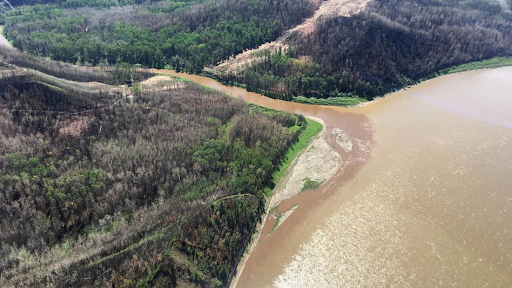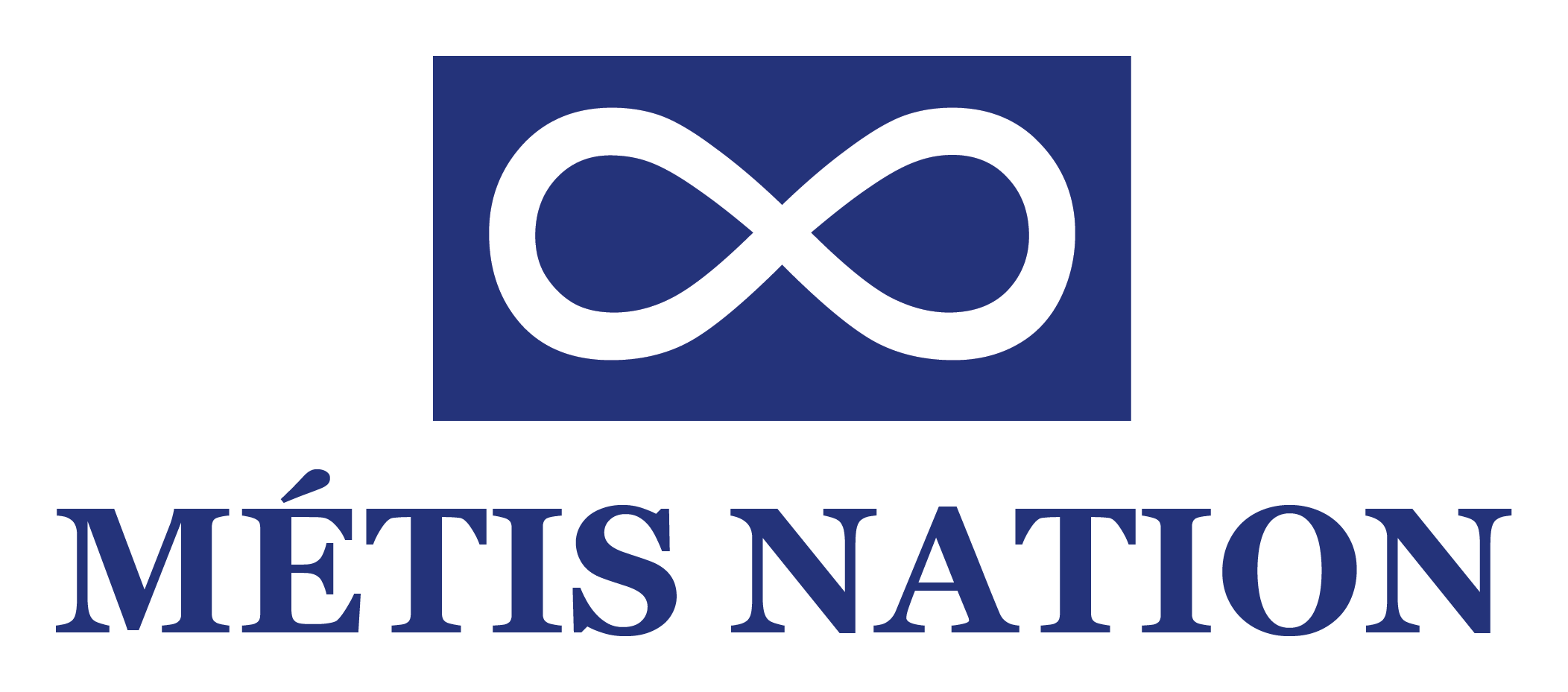
Wildfires are becoming increasingly frequent and intense in Canadian summers.[1] In 2018, British Columbia saw its worst fire season in history, burning 1.3 million hectares of land.[2] This was just two years after record-breaking fires devastated the city of Fort McMurray in Alberta, costing $9 billion in losses.[3] With this increase in wildfires caused by climate change[4], we’re seeing more and more health impacts to Canadians.
Wildfires directly and indirectly impact human health
Wildfire smoke exposure is a big factor in increased health issues during fire seasons. Smoke travels easily, so those who don’t live in fire prone areas can also experience health problems. Our Wildfire Smoke and Climate Change article goes more in depth on the respiratory and other health risks of wildfire smoke.
Mental health impacts from wildfires are also a major concern. Unexpected evacuations can be traumatic, putting residents in high stress situations for long periods of time which can lead to significant mental health impacts. In this video, When Wildfires Strike, we hear from experts and evacuees about what’s needed to tackle the social implications of wildfires.
Critically, increasing wildfires combined with other effects from climate change are also taking a toll on one of the most precious natural resources that we all depend on: water. The remainder of this article looks at the connections between wildfire, water, and our health.
Wildfire impacts on water
Freshwater sources are impacted directly and indirectly by wildfires, which in turn impact human health. Water is essential for life, so when water availability and quality are affected, so is the health of communities and ecosystems.
Forests play a huge role in the water cycle. When wildfires occur and the trees are burned down, the water cycle is disturbed. “Forests are key drivers in how much water is available, at what time it's available, and of what quality it's going to be,” says Monica Emelko, a Professor in the Department of Civil and Environmental Engineering at the University of Waterloo. She describes forests as providing “a natural capture and filtration process that is directly connected to all of our water supplies, whether it be surface water or groundwater.”
Normally plants would absorb rain and help replenish groundwater and surface water sources. But with climate change, there’s more fires, resulting in there being less vegetation, which in turn can affect the quality and amount of water that is available across the landscape.
Read More: How do wildfires impact the water cycle?
Canada’s freshwater comes in many forms, such as glaciers, snow, groundwater reserves, lakes and rivers. All of these forms contribute to keeping the water cycle moving and when one is disturbed, the whole cycle is disturbed.
Some of the water in the soil is taken up by plants and transpired back into the atmosphere, and the rest flows into groundwater reserves and replenishes them. Transpiration from plants and evaporation from water bodies both transport water molecules from a liquid state to water vapour in the air. This keeps the cycle moving as the water vapour will once again fall as rain and snow.[5]
When a wildfire occurs, this cycle may be disrupted in some areas where there is less vegetation to take up water. This leaves those areas with less water, and results in increased surface runoff, transporting the water to different areas.

American Forest Foundation. "Western Water Threatened by Wildfire"
Forests have a natural water filtration and storage system within the soil. Severe wildfires burn the topsoil and create a hard packed layer of soil that doesn’t absorb much water. This adds to the increased surface runoff.
Predicting the risks to our water supply isn't simple either. Wildfire and water expert Francois Robinne of the University of Alberta explains the compounding effects of these impacts on our water supplies. "Climate change impacts fire activity [as well as] water, water availability, precipitation patterns, and snow accumulation. But fire can impact water as well.”
“There is a double exposure kind of situation” Robinne explains, because climate change is directly impacting water sources but there are also indirect impacts on water such as those from wildfires.
Watch: Experts talk about the critical and complex connections between wildfire and water in Canada, and what to expect under a changing climate.
Water quality
With more frequent wildfires across the globe, the threats posed to water quality are becoming more clear. When a rain event occurs after a wildfire, the water flows into reservoirs, carrying things like ash, debris, sediment, nutrients and other contaminants with it.[6]

Water flows into the Athabasca River after a big rain event during the time of the Fort McMurray fires. (Sarah Hustins - The Globe and Mail)
Read more: How do wildfires impact water treatment costs?
In 2016 Fort McMurray saw a big increase in their water treatment costs.[7] Similar patterns have been observed elsewhere, such as in Denver after the Hayman fire in 2002[8] as well as in the 2019 bushfires in Australia.[9]
Increased sediment in the water can cause it to build up in pipes and reservoirs, which results in costly repairs or a need to build new treatment plants.
Increased nutrients can also pose issues. When excess phosphorus flows into the reservoir, increased algal bloom growth is likely to occur. Some types of algal blooms can be toxic to humans if consumed, so the water is required to be more carefully treated after a wildfire to make sure that it’s safe to drink.[10] This also increases costs.
Wildfires in urban environments bring their own set of challenges for water treatment. “With the urban landscape, yes, you have materials washing off, but then things are necessarily different because they're human made. Many of those compounds can be toxic and it's difficult to scan for all of them [in water treatment]” Emelko explains.
When human made materials burn, the chemicals in the ash can find their way into lakes and reservoirs, and can cause serious health problems.[11] During and after a wildfire, contaminated water can make its way into the pipes before it has been properly cleaned, as we saw with the fires in Santa Rosa, California in 2017 [12] and Paradise, California in 2018.[13] In these cases, benzene (a cancer-causing chemical) got into the water systems, and years later the water was still not safe to drink in some areas.[14]
Toxins and compounds from ash in the water can negatively impact human health directly and indirectly. For instance, high concentrations of Nitrogen compounds can affect cardiovascular functioning when consumed in drinking water, while runoff with high Nitrogen can also increase algal blooms in recreational water bodies, which themselves can cause human health problems.[15] More research is needed to fully understand the health impacts of elevated chemical concentrations in drinking water over the short-term versus long-term.
Future
The frequency and severity of wildfires have increased and are predicted to continue increasing.[16] Mike Flannigan, an expert in wildland fire at the University of Alberta, explains that with rising temperatures we’re seeing longer fire seasons, drier fuels and more lightning activity, which are the prime conditions for wildfires. In the future, “we expect more severe fire weather, more severe fire seasons” Flannigan explains. “During the course of a decade we're going to see more bad fire seasons than we have in the past.”
Wildfires and other climate impacts are bringing all kinds of challenges to our resource management systems, and are a major threat to water security in Canada.[17] “The predictions don't look good at all. We're talking about drastic reductions of how much water we have in Canada” says Robinne. Important work is underway to improve and adapt water management systems to fluctuating water quality under wildfires and other climate change impacts.
Living in a water rich country like Canada, it’s hard to think of situations where we wouldn’t have enough water. However, with snow melting earlier and glaciers shrinking, climate and water projections suggest that some part of Canada may experience very dry summers, we need to mitigate risks now to make sure our water sources stay secure in the future.
References
- Wotton, B. M., Flannigan, M. D., & Marshall, G. A. (2017). Potential climate change impacts on fire intensity and key wildfire suppression thresholds in Canada. Environmental Research Letters, 12(9), 095003. https://doi.org/10.1088/1748-9326/aa7e6e
- Government of British Columbia, “Wildfire Season Summary 2019”
- CBC. “Fort McMurray wildfire costs to reach almost $9B, new report says.”
- Kirchmeier-Young, M.C., Zweirs, F.W., Gillet, N.P. and Cannon, A.J. (2017). Attributing extreme fire risk in Western Canada to human emissions. Climatic Change, 144, p. 365-379. https://doi.org/10.1007/s10584-017-2030-0
- Bonsal, B.R., Peters, D.L., Seglenieks, F., Rivera, A., and Berg, A. (2019): Changes in freshwater availability across Canada; Chapter 6 in Canada’s Changing Climate Report, (ed.) E. Bush and D.S. Lemmen; Government of Canada, Ottawa, Ontario, p. 261–342. https://www.nrcan.gc.ca/sites/www.nrcan.gc.ca/files/energy/Climate-change/pdf/CCCR-Chapter6-ChangesInFreshwaterAvailabilityAcrossCanada.pdf
- United States Environmental Protection Agency. “Wildfires: How Do They Affect Our Water Supplies?”
- CBC. “Fort McMurray seeing big spike in water-treatment costs”
- Denver Water Tap. “The legacy of Colorado’s largest wildfire”
- The Guardian. “Residents of bushfire-ravaged Bega Valley rely on carted water after flooding.”
- CBC. “Fort McMurray seeing big spike in water-treatment costs”
- Tecle, A., & Neary, D. (2015). Water Quality Impacts of Forest Fires. Journal of Pollution Effects & Control, 03(03). https://doi.org/10.4172/2375-4397.1000140
- NBC. “After the fire: Blazes pose hidden threat to the West's drinking water”
- CBC. “After deadly wildfire, California town now has cancer-causing chemical in water”
- NPR. “Water Uncertainty Frustrates Victims Of California's Worst Wildfire”
- Smith, H. G., Sheridan, G. J., Lane, P. N. J., Nyman, P., & Haydon, S. (2011). Wildfire effects on water quality in forest catchments: A review with implications for water supply. Journal of Hydrology, 396(1–2), 170–192. https://doi.org/10.1016/j.jhydrol.2010.10.043
- Natural Resources Canada. “Indicator: Forest fires”
- Robinne, F.-N., Bladon, K. D., Miller, C., Parisien, M.-A., Mathieu, J., & Flannigan, M. D. (2017). A spatial evaluation of global wildfire-water risks to human and natural systems. Science of the Total Environment, 610–611, 1193–1206. https://doi.org/10.1016/j.scitotenv.2017.08.112
Recommended Article Citation
Climate Atlas of Canada. (n.d.) Wildfires, Water, and Our Health. Prairie Climate Centre. https://climateatlas.ca/wildfires-water-and-our-health









.png)


